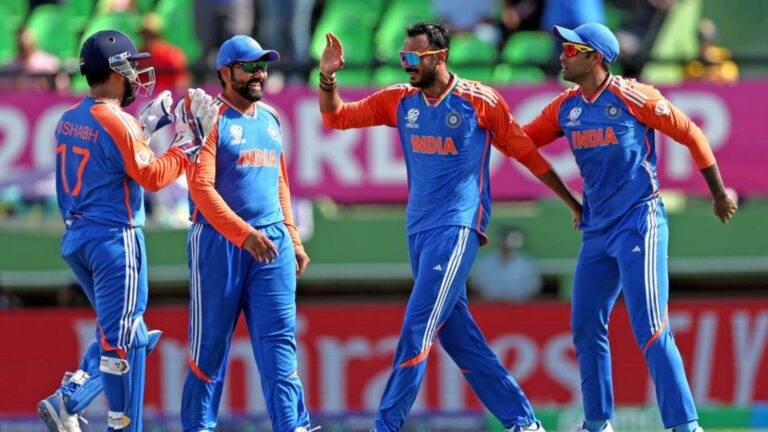Reddy Anna Book: Betting on Cricket’s Player Who Will Score the First Boundary in the Final Over
Cricket is a game of moments, and few moments are as electrifying as the final over of an innings. Whether it’s a nail-biting finish in a T20 match or a tense climax in an ODI, the last six deliveries often define the outcome of the game. Among the many betting markets available, predicting which player will score the first boundary in the final over has become an increasingly popular option. This market focuses on individual performances during one of the most high-pressure phases of the match. Platforms like the Reddy Anna Book provide tools and insights to help you navigate this exciting betting opportunity. In this article, we’ll explore everything you need to know about betting on the player who will score the first boundary in the final over, from understanding the dynamics of gameplay to analyzing factors that influence outcomes.
What Does “Player Who Will Score the First Boundary in the Final Over” Mean?
When placing a bet on the player who will score the first boundary in the final over, you’re essentially predicting which batsman will hit the first four or six runs in the last six deliveries of an innings. A boundary occurs when the ball crosses the rope without bouncing (six) or after bouncing once (four), scoring either four or six runs for their team.
This market is particularly thrilling because it focuses on a single over—the final one—where pressure is at its peak. Batsmen are often required to take risks to accelerate the scoring rate, making boundaries more likely. However, the bowler and fielding team also employ strategic tactics to prevent these shots, creating a fascinating contest between bat and ball.
Platforms like the Mahadev Book ID allow you to place bets on individual players before or during the match, while systems like Mahadev Book ID provide access to historical data and player statistics to inform your decisions.
Why Bet on the Player Who Will Score the First Boundary in the Final Over?
Betting on the player who will score the first boundary in the final over combines excitement and strategy, making it an appealing choice for both casual fans and seasoned bettors. Here are some reasons why this market stands out:
- Focus on Individual Performances: Unlike team-based markets, this option allows you to focus on specific batsmen, adding a personal touch to your betting experience.
- High-Stakes Drama: The final over is often the most intense phase of the match, with every delivery carrying immense significance. Predicting the first boundary adds an extra layer of engagement.
- Short-Term Focus: Since this market revolves around just one over, it provides a quick and concentrated betting opportunity without requiring long-term analysis.
- Data-Driven Insights: With platforms like Mahadev Book ID, you can analyze past performances, player tendencies, and venue characteristics to make informed predictions.
Whether you’re a fan of explosive hitters like Andre Russell or calm finishers like MS Dhoni, this market lets you celebrate their ability to deliver under pressure while potentially earning returns.
Factors That Influence Who Scores the First Boundary in the Final Over
Predicting the player who will score the first boundary in the final over involves analyzing several variables that impact batting performance. Below, we’ll break down the key factors to consider.
1. Batting Order and Role
A player’s position in the batting order significantly affects their likelihood of facing the final over. Finishers—batsmen who specialize in accelerating the scoring rate during the death overs—are more likely to be at the crease during this phase. Players like Kieron Pollard, Hardik Pandya, or Jos Buttler often find themselves in situations where they must clear the boundary or find gaps for fours.
Openers or middle-order batsmen who remain not out until the end also become strong candidates for this market. Understanding the roles of different players helps you identify potential boundary-hitters.
2. Pitch and Venue Characteristics
The nature of the pitch and the size of the ground play a crucial role in determining how easy it is to score boundaries. Smaller grounds with short boundaries—such as those in India or Australia—favor aggressive hitters, while larger stadiums with longer boundaries require exceptional power to clear the ropes.
Additionally, pitches that assist spinners or offer uneven bounce can make it harder for batsmen to time their shots, reducing the chances of boundaries. Studying venue-specific trends using platforms like Mahadev Book ID can give you valuable insights into expected boundary-scoring patterns.
3. Bowling Attack and Field Placements
The quality and composition of the bowling attack directly influence the frequency of boundaries. Teams with disciplined bowlers who execute yorkers and slower deliveries effectively can limit boundary-scoring opportunities. Conversely, inexperienced or inconsistent bowlers are more likely to concede boundaries, especially under pressure.
Field placements also matter. Captains often set defensive fields during the final over to minimize boundaries, but clever batsmen can still find gaps and clear the ropes. Observing how teams strategize against specific players helps you anticipate potential boundary-hitters.
4. Match Context and Pressure Situations
The context of the match shapes how players approach the final over. In high-pressure situations—such as close chases or knockout games—batsmen may take greater risks to accelerate the scoring rate, leading to more boundaries. On the other hand, cautious approaches in dead-rubber matches might result in fewer boundaries.
For instance, players like AB de Villiers thrive under pressure, often producing breathtaking displays of power-hitting when their team needs them most. Understanding these tendencies can guide your predictions.
5. Player Form and Recent Performances
A player’s recent form is a strong indicator of their ability to score boundaries consistently. Batsmen coming off a string of successful performances are more likely to replicate their success in upcoming matches. Similarly, players struggling for rhythm may find it harder to time their shots or take risks.
Using resources like the Reddy Anna Book platform, you can track live updates and study player stats to gauge their current form. Additionally, head-to-head matchups between batsmen and bowlers provide further context for your predictions.
Strategies for Betting on the Top Boundary-Hitter
Now that we’ve covered the influencing factors, let’s discuss practical strategies for improving your chances of success when betting on the player who will score the first boundary in the final over.
1. Analyze Historical Data
One of the most effective ways to predict future outcomes is by studying historical data. Platforms like Mahadev Book ID offer access to extensive databases containing match statistics, player profiles, and venue analyses. Look for trends such as average boundaries per match by specific players or at particular venues.
For example, if a player has a history of hitting frequent boundaries at a small ground like Eden Gardens, they become a strong candidate for your bet.
2. Focus on Power-Hitters
Certain players are renowned for their ability to clear the ropes or find gaps consistently. Names like Chris Gayle, David Warner, or Glenn Maxwell immediately come to mind. These players have built their reputations on explosive hitting and are natural choices for this market.
However, don’t overlook underrated hitters who may surprise you. For instance, lower-order batsmen like Hardik Pandya or Liam Livingstone often deliver unexpected fireworks during their brief cameos.
3. Monitor Team Lineups and Conditions
Last-minute changes to team lineups or unexpected shifts in weather conditions can drastically alter the dynamics of a match. Always stay updated on pre-match announcements and ensure you factor in any new developments before finalizing your bet.
For example, if a team decides to rest its star hitter or play an extra spinner, it could impact the overall boundary-scoring potential of the lineup.
4. Consider Format-Specific Nuances
Different formats demand different approaches. In T20s, every over presents an opportunity for boundaries, making it easier to identify potential candidates. In ODIs, the focus shifts to building partnerships before accelerating, which might delay boundary-hitting until later in the innings.
Test cricket rarely features frequent boundaries in the final over, but certain situations—such as declaring late in the innings or chasing quick runs—can create opportunities for explosive hitting. Tailor your predictions accordingly to align with the format being played.
Common Pitfalls to Avoid
While betting on the player who will score the first boundary in the final over can be rewarding, it’s easy to fall into traps that diminish your chances of success. Here are some common mistakes to avoid:
1. Ignoring Venue Characteristics
Each stadium has unique features that affect gameplay. Failing to account for these differences can lead to inaccurate predictions. For instance, larger grounds with long boundaries reduce the likelihood of boundaries, while smaller stadiums favor power-hitters.
2. Overlooking Weather Reports
Weather reports provide critical information about potential swing or seam movement. Disregarding these updates can lead to misguided predictions. Always check the forecast before finalizing your bet.
3. Relying Solely on Star Players
While star players are often safe bets, they aren’t always guaranteed to deliver. Injuries, poor form, or tactical decisions can limit their impact. Diversifying your options by considering lesser-known hitters adds depth to your strategy.
Tools and Resources for Better Predictions
To maximize your chances of success, leverage the following tools and resources:
- Mahadev Book ID: This system provides access to comprehensive databases containing match statistics, player profiles, and venue analyses. Use it to gather relevant data for your predictions.
- Reddy Anna Book Platform: Known for its user-friendly interface and reliable odds, this platform allows you to place bets confidently. Its real-time updates ensure you never miss out on crucial developments during a match.
- Cricbuzz and ESPN Stats: Websites like Cricbuzz offer detailed match analyses, player stats, and expert commentary. These resources can supplement your research efforts.
Conclusion
Betting on the player who will score the first boundary in the final over of a cricket match combines the excitement of boundary-hitting with the intellectual challenge of prediction. It requires a deep understanding of cricketing strategies, careful analysis of influencing factors, and strategic decision-making. By leveraging platforms like the Reddy Anna Book and utilizing systems like Mahadev Book ID, you can enhance your ability to make informed bets.
Remember, patience and diligence are key. Take the time to study the variables at play, avoid common pitfalls, and continuously refine your approach. With practice and persistence, you’ll not only enjoy the thrill of watching boundaries soar into the stands but also develop a keen eye for spotting profitable opportunities. Whether you’re a casual fan or someone looking to build a career around sports betting, mastering this aspect of cricket betting can open doors to countless possibilities.
So, the next time you watch a cricket match, pay close attention to the final over. Who knows? You might just uncover the winning formula for your next bet!







